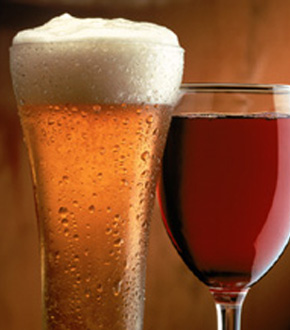 Every once in a while you hear about such a good idea that you just know it deserves a prize. Such is the idea of a few students from Rice University, who are taking drinking beer to a whole new level; the genetically engineering level. They are entering it in the International Genetically Engineered Machine (iGEM) competition Nov. 8-9 in Cambridge, the world’s largest syntethic biology competition.
Every once in a while you hear about such a good idea that you just know it deserves a prize. Such is the idea of a few students from Rice University, who are taking drinking beer to a whole new level; the genetically engineering level. They are entering it in the International Genetically Engineered Machine (iGEM) competition Nov. 8-9 in Cambridge, the world’s largest syntethic biology competition.
This competition is all about using a toolkitof DNA building blocks to create living organisms which do useful things that they shouldn’t normally do. Other iGEM creations include some bacteria the smells minty when they grow up and as a banana when they stop growing and bacteria that can be used as photographic film. The Rice team did well in the 2 years they participated, but didn’t won the prize.
“After last year’s contest, we were sitting around talking about what we’d do this year,” said junior Taylor Stevenson. “(Graduate student) Peter Nguyen made a joke about putting resveratrol into beer, but none of us took it seriously.”
After that, they started reading about modifying yeast with resveratrol-related genes and they found out that this issue has been tackled by people before, but in different forms.
“That was when we said, ‘You know, we could actually do this,'” said junior Thomas Segall-Shapiro.
So since college students spend a whole lot of time drinking thinking about beer (ironically, most of them can’t legally drink beer), there’s no good reason to stop taking things a bit further. But the problem is that until now they haven’t been able to brew a single drop of this beer, because despite the fact that they believe the cultures they are preparing will create the needed yeast (that has to ferment the beer and create resveratrol) they will bear some chemical markers which are needed for these experiments.
“There’s no way anyone’s drinking any of this until we get rid of that, not to mention that there’s only one genetically modified strain of yeast that’s ever been approved for use in beer, period,” said Segall-Shapiro. “In short, it will be a long time before anybody consumes any of this.”
Beer with resveratrol will not just make you more sociable and feel better, but it will also have an anti-inflammatory, anticancer and cardiovascular effect.
In terms of education value, the great thing about synthetic biology research is that it stimulates undergraduate creativity and gives them an opportunity to work collaboratively at an early stage of their science and engineering education,” said Silberg, assistant professor of biochemistry and cell biology. “While students work collaboratively in other undergraduate research endeavors, they typically are not given the pie-in-the-sky opportunity to pursue their own ideas.”
So even if they are not able to find the right yeast in time, things are going in an interesting way.









